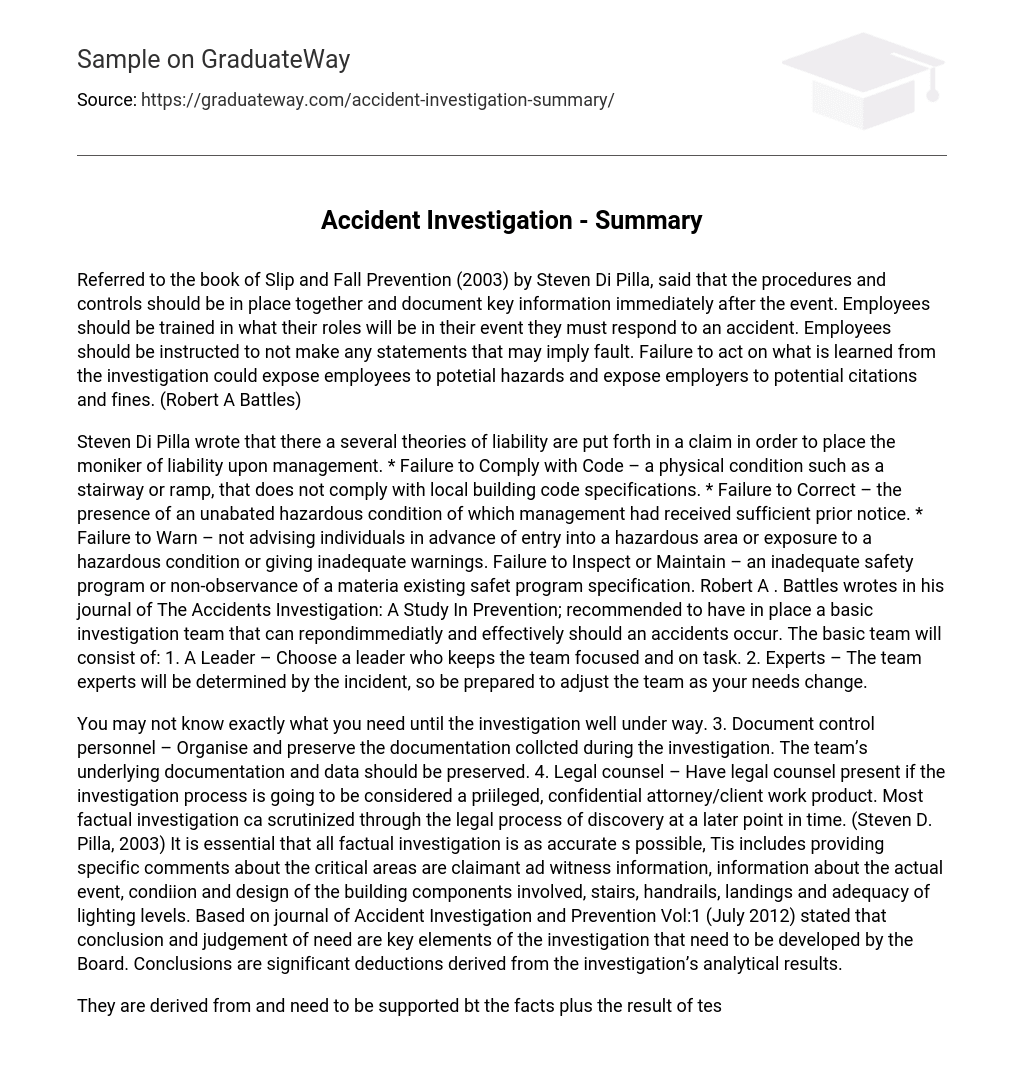According to Steven Di Pilla’s book on Slip and Fall Prevention (2003), it is recommended that procedures and controls are implemented and important information is documented promptly after an event. Employees should receive training on their responsibilities in the event of an accident. They should also be instructed not to make any statements that might imply fault. Neglecting to act on the findings of an investigation could put employees at risk and result in citations and penalties for employers. (Robert A Battles)
According to Steven Di Pilla, there are several theories of liability that are used to assign blame to management. These theories include Failure to Comply with Code, which refers to a physical condition like a stairway or ramp not meeting local building code specifications. Another theory is Failure to Correct, which occurs when management fails to address a known hazardous condition even after receiving sufficient notice. Failure to Warn is another theory, which involves not informing individuals about a hazardous area or condition adequately. Lastly, Failure to Inspect or Maintain refers to an inadequate safety program or not following existing safety program specifications.
In his journal titled “The Accidents Investigation: A Study in Prevention”, Robert A. Battles suggests having a basic investigation team in place to quickly and effectively respond to accidents. This team should consist of a leader who can keep the team focused and on task, as well as experts who may need to be adjusted based on the incident at hand.
During the investigation, it may be unclear what exactly is needed. The documentation collected should be organized and preserved by document control personnel. It is important to preserve the team’s underlying documentation and data. Legal counsel should be present if the investigation is considered privileged and confidential attorney/client work product. Most factual investigations can be scrutinized through the legal process of discovery later on. Accuracy is essential in all factual investigations, including specific comments about critical areas, claimant and witness information, information about the actual event, condition and design of the building components (such as stairs, handrails, landings), and adequacy of lighting levels. The Journal of Accident Investigation and Prevention (Vol:1 July 2012) states that conclusions and judgments regarding the need for investigation are important elements that should be developed by the Board. Conclusions are significant deductions derived from the analytical results of the investigation.
The conclusions are based on factual evidence, testing, and various analyses. They can include concise statements identifying the causal factors of the accident determined through the examination of facts. The conclusions also address any potential confusion surrounding initially suspected causes, address significant concerns that are unsupported or inconclusive, and highlight positive performance aspects discovered during the investigation, if applicable.
References:
Robert A. Battles. (2012) The Accident Investigation: A Study in Prevention. Lane Powell Attorneys & Counselors, Pp. 26
DOE Handbook. (July 2012) Accident Investigation and Prevention Vol:1 Accident Analysis Techniques. U. S. Department of Energy Washington, Pp. 86
Steven Di Pilla (2003) Slip and Fall Prevention: A Practical Handbook. New York: Lewis Publisher





